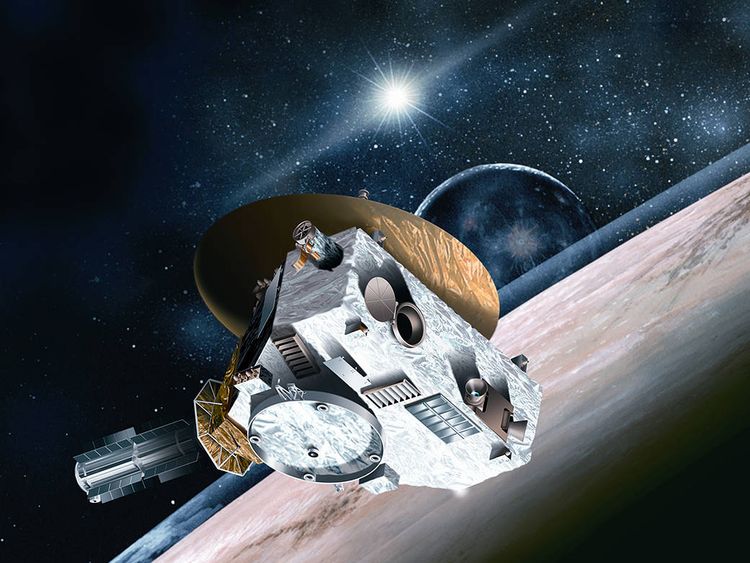A NASA spacecraft has broken records by successfully going into orbit around an ancient asteroid.
The Osiris-Rex spacecraft is now orbiting Bennu – a tiny asteroid that is just 500m (1,600ft) long and found 70 million miles from Earth.
Bennu is the smallest celestial body to ever be orbited by a spacecraft, and Osiris-Rex's laps are barely one mile above the asteroid's surface.
NASA says the spacecraft's objective is to grab samples of gravel from the asteroid in 2020 and return them to Earth by 2023 – a manoeuvre described as a "gentle high-five".
The $800 million unmanned spaceship launched two years ago from Cape Canaveral in Florida – arriving at its destination on 3 December.
After closely studying the asteroid for several weeks, Osiris-Rex fired its thrusters to bring it into orbit around Bennu at 7.43pm UK time on New Year's Eve.
Dante Lauretta, Osiris-Rex's principal investigator, said: "Entering orbit around Bennu is an amazing accomplishment that our team has been planning for years."

NASA has described the achievement as a "leap for humankind" because no spacecraft has ever "circled so close to such a small space object – one with barely enough gravity to keep a vehicle in a stable orbit".
Bennu has a gravity force that is just five-millionths as strong as Earth's.
From now until mid-February, Osiris-Rex will use a suite of five scientific instruments to map Bennu in high resolution, enabling scientists to decide where to take the sample.
A reverse vacuum and a circular device, not dissimilar from a car's filter, will then be used to collect about 60g of material.
Bennu is also regarded as potentially dangerous, as there is a one in 2,700 chance of the asteroid colliding with Earth in 2135.
It is one of the oldest asteroids known to NASA, and scientists hope it will reveal more about the early formation of the solar system.

The start of 2019 is shaping up to be a busy one for NASA, as its New Horizons spacecraft is also due to pay a visit to a tiny, icy world that lies one billion miles beyond Pluto in the early hours of New Year's Day.
It will fly past a mysterious object nicknamed Ultima Thule, which lies four billion miles from Earth, at 5.33am UK time – but it will take 10 hours for flight controllers to find out whether New Horizons survives the close encounter.
Roughly 20 miles long and shaped like a giant peanut, Ultima Thule was discovered using the Hubble Space Telescope in 2014, and will become the most distant world ever explored by humankind.
Clear images of the cosmic body are expected to emerge in the coming days.

Alan Stern, the lead planetary scientist on the New Horizons mission, said: "The object is in such a deep freeze that it is perfectly preserved from its original formation.
More from Science & Tech
"Everything we are going to learn about Ultima – from its composition to its geology to how it was originally assembled, whether it has satellites and an atmosphere and those kinds of things – are going to teach us about the original formation conditions of objects in the solar system.
"I think that the kinds of things NASA is doing are the envy of the world."
[contf] [contfnew] 
Sky News
[contfnewc] [contfnewc]






